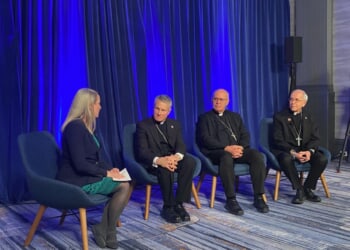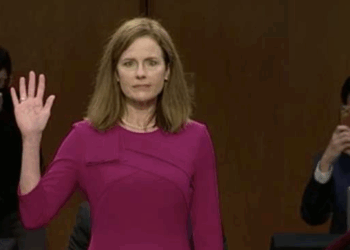Rethinking nuclear radiation and its dangers is critical if the world is to turn away from hydrocarbon sources of energy.
Many of us are seeing unwelcome spikes in our electric bills. This is due in large part to the fact that the demand for electricity is rapidly increasing and the supply is not. To meet this growing demand, utilities will have to massively increase their supply from all sources including nuclear power. In fact, many experts believe it will be impossible to meet this demand without many more nuclear plants, both traditional large reactors and smaller modular ones (SMRs). To build these plants at reasonable cost, we will need to address the public’s fear of nuclear radiation.
Since the dawn of humanity, life has flourished in a sea of natural radiation — from cosmic rays, from rocks beneath our feet, and even from the food we eat. Every human being carries traces of naturally radioactive potassium and carbon. In short, radiation is part of life itself. Yet, for most of the past century, we’ve been taught to fear it.
Is that fear of radiation justified?
For decades, science could not answer that question with confidence. The effects of low doses of radiation were simply too small to measure against normal variations in human health. So, out of an abundance of caution, scientists and regulators had adopted a simple assumption known as the Linear No-Threshold (LNT) model. It held that any dose of radiation, no matter how tiny, carries some risk of harm — and that those risks increase with every additional exposure. The LNT has provided the basis and a guiding principle for all uses of radiation. Radioactive material users must reduce radiation to levels known as “As Low As Reasonably Achievable” (ALARA). Even though the science behind LNT and ALARA is over 90 years old, it is still the operating policy covering all uses of radioactive materials.
That “safety” assumption has had sweeping consequences. For three-quarters of a century, the LNT has governed how radiation is taught, studied, regulated, and feared. It has shaped policies in energy, medicine, and research. One unfortunate result has been to convince the public that all radiation is dangerous and must be avoided at any cost. That fear, amplified by sensational headlines, stories, and speculation, has distorted our understanding of nuclear risks and thwarted the opportunity to produce a huge amount of clean energy from nuclear power.
Under current US policy, nuclear plants must prevent even minute releases of radiation — typically a fraction of what we all receive from natural background sources. The average background radiation in the United States is 6.3 millisieverts (mSv) a year (a measure of radiation dose and biological effect), clearly a dose that causes no harm. Yet regulations limit the allowable public dose to just one mSv/year.
Consider the actual record. Despite frightful headlines, the radiation released from Three Mile Island in 1979 and Fukushima in 2011 caused zero deaths and no measurable adverse health effects. Even Chernobyl, the worst nuclear accident in history and one handled disastrously, resulted in fewer than one hundred radiation casualties — mostly among the firefighters and workers who received very high, acute doses. Yet public memory retains not the facts but the sensational headlines. The result is a world that fears radiation more than it fears the fossil fuels that kill millions annually through pollution and their impact on the climate.
Now, for the first time, science has the tools to resolve the uncertainty that gave rise to fear and the LNT. Researchers at Columbia University’s Center for Radiological Research and Japan’s Radiation Effects Research Foundation (RERF) have reexamined eight decades of meticulously collected health data from Hiroshima and Nagasaki survivors, along with lifetime records from hundreds of thousands of nuclear workers around the world. Using advanced artificial intelligence techniques, they can now detect subtle statistical patterns that older analyses could not.
The results have been striking. These studies identify a threshold below which there is no statistically significant evidence of harm. The human body, it turns out, responds to low-level radiation as it does to other mild stressors — by repairing or replacing damaged cells. That is why one aspirin a day is harmless, even beneficial; a full bottle at once is fatal. Radiation behaves much the same way. The new analysis finds that annual doses up to roughly 50 millisieverts — about fifty times the current regulatory limit for the public — show no measurable harm to human health or longevity.
These findings also align with observations. In regions of the world where natural background radiation is unusually high (even above 200 millisieverts/year) — Ramsar, Iran, Karala, India; Guarapari, Brazil, for example — local populations are just as healthy, and sometimes healthier, than neighboring communities. The data now explain why.
By resolving this long-standing uncertainty, these studies have brought radiation science back into harmony with biology and experience. If regulators embrace this evidence, they can finally move beyond outdated assumptions and establish a data-based threshold below which exposure is not of regulatory concern. That shift would pave the way for faster, less costly nuclear power development, new medical and research applications, and a public dialogue grounded in evidence rather than fear.
About the Authors: W. D. Budinger, Ray Rothrock and Paul Bauman
William D. (Bill) Budinger is a physicist, author and founder of Rodel, Inc., a global manufacturing company, where he served for 33 years as its chairman and CEO. He did post graduate work at Sandia National Labs and was named a Hero of Chemistry by the American Chemical Society. Bill holds more than three dozen patents, including the key processing technologies that enabled the return of semiconductor manufacturing to the United States in the 1990s. Rodel is now the Semiconductor Materials division of the restructured DuPont Company. Bill is also a founder of the Rodel Foundations and creator of the Rodel Fellowships in Public Leadership. He is a trustee of the Aspen Institute and serves on the boards of Third Way, the Public Policy Institute and The Democracy Journal, and was an early trustee of the Democratic Leadership Council.
Ray Rothrock is a venture capitalist and partner emeritus at Venrock, the venture capital arm of the Rockefeller family’s efforts. In his earlier career he was a professional nuclear engineer. Rothrock holds a BS in Nuclear Engineering, Summa Cum Laude, from Texas A&M University, an MS in Nuclear Engineering from the Massachusetts Institute of Technology, and an MBA with Distinction from the Harvard Business School. He also is a Distinguished Alumnus of the MIT Nuclear Science and Engineering Department, and Distinguished Member of Tau Beta Pi.
Dr. Paul Bauman is an advisor to public, private, and non-profit organizations, focusing on energy and the environment. He is presently directing the Rodel Foundation’s clean energy project. Paul spent 15 years working on landscape-scale conservation, including the world’s largest donation of private land for the creation of national parks in Chile and Argentina for Tompkins Conservation. For the Nature Conservancy’s Global Priorities team, Paul helped complete conservation projects in Asia, Central and South America, Canada and the United States. Prior to his conservation career, Dr. Bauman was a faculty member and administrator at the University of Colorado, including multiple publications and NGO consultancies through the Center for Public Management in the Graduate School of Public Affairs. In the early 1980s, Paul served as a conservation projects manager for the US Department of Energy’s Region VIII office. He holds a PhD in Public Policy and lives in Boulder, Colorado.
Image: Shutterstock/Ihor Bondarenko


















